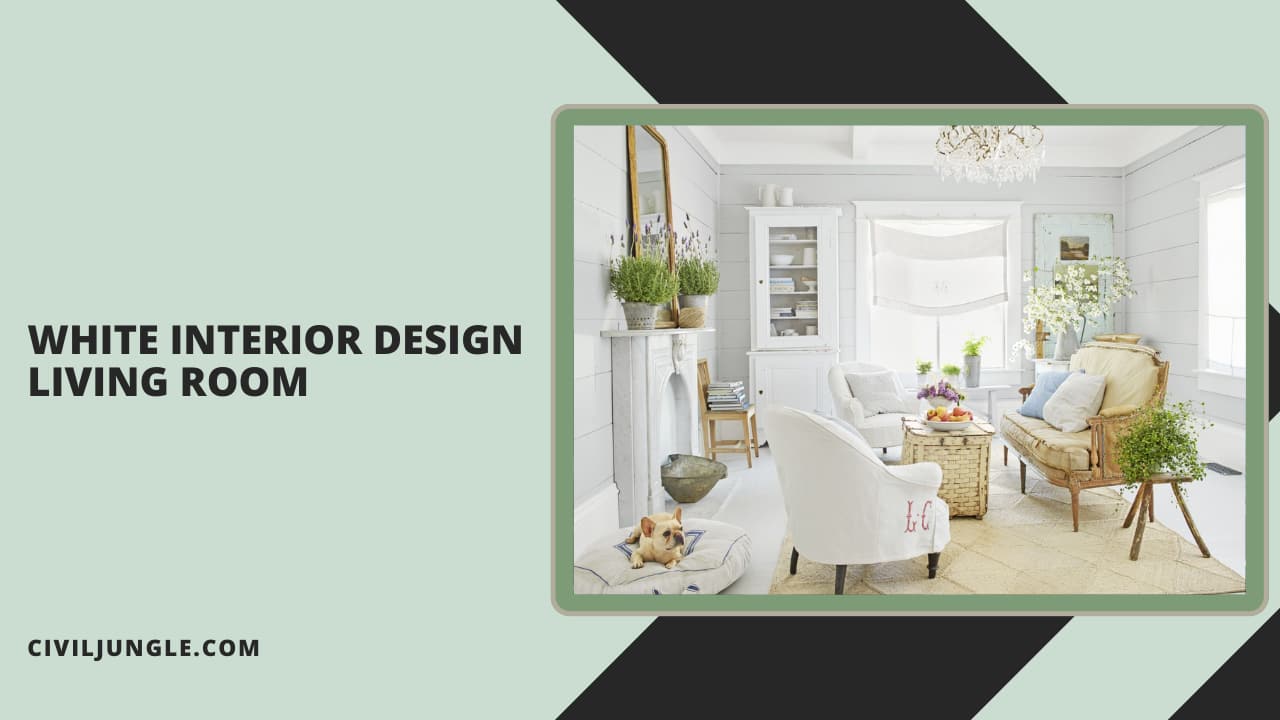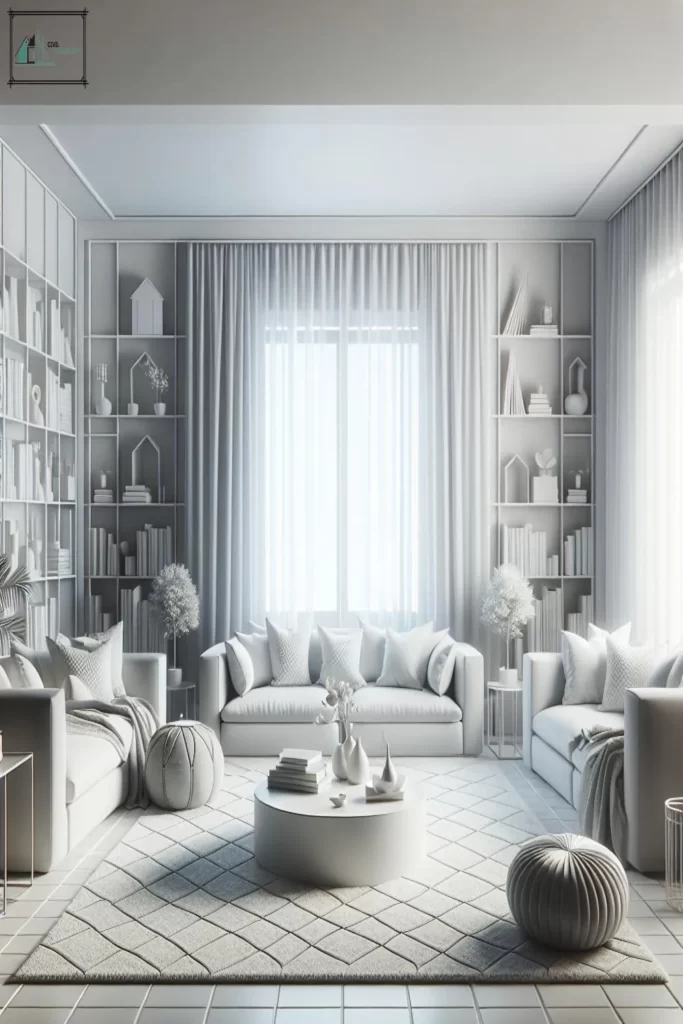White interior design for living rooms has become a popular trend in recent years, creating a chic and sophisticated atmosphere.
This minimalist style uses white as the main color palette, accentuated with pops of color and textures.
It is a versatile and timeless approach that can give a sense of openness and brightness to any living space.
In this article, we will explore the various elements and techniques that make a white interior design living room stand out, and provide tips on how to incorporate it into your own home.
Whether you prefer a classic or modern aesthetic, read on to discover the beauty and charm of white living room interiors.
White Interior Design Living Room
Important Point
Also, Read: Yellow Interior Design Ideas
Also, Read: Low Budget Interior Design for Living Room
White interior design for living rooms is a classic and timeless style that has been popular for years.
This design trend focuses on using a neutral white color palette to create a bright, airy and clean space. It is a great choice for those looking for a modern and elegant look for their living room.
The main characteristic of a white interior design living room is its use of white as the dominant color. This can be seen in the walls, flooring, furniture, and even the accessories.
The use of other neutral colors such as beige, gray, and cream may also be incorporated to add texture and depth to the room.
One of the main advantages of white interior design is its ability to make a space feel larger and more open.
This is because white reflects light, making the room appear brighter and more spacious. This is particularly useful for small living rooms or those with limited natural light.
Another benefit of white interior design is its versatility. It can be easily paired with different colors, textures, and patterns to create different looks.
For example, white walls can be paired with bold and colorful furniture to add a pop of color to the room. On the other hand, white furniture can be paired with textured fabrics, such as a shaggy rug or velvet pillows, to add visual interest to the space.
In addition to being versatile, white interior design is also easy to maintain. White walls and furniture are less likely to show stains and dirt, making it a practical choice for high-traffic areas like the living room.
When it comes to furniture, white interior design living rooms often feature sleek and modern pieces. This adds to the clean and minimalist look of the room. However, furniture with curved lines and details can also be incorporated to add softness and balance to the space.
Accessories are also an important aspect of white interior design. A few well-chosen accessories can add character and personality to the room.
This can include items such as throw pillows, vases, and artwork. These can be used to add pops of color, texture, or pattern to the otherwise neutral space.
Conclusion
In conclusion, white interior design for a living room offers a timeless and versatile aesthetic. It can create a sense of calm and serenity while also allowing for personalization through the use of textures, patterns, and accent colors.
Whether you prefer a minimalistic, contemporary look or a cozy and traditional feel, white interior design can be adapted to fit any style.
By following the tips and incorporating the elements mentioned in this article, you can create a stunning and inviting white living room that will stand the test of time.
So why not give it a try and see how this monochromatic color can transform your living space into a stylish and elegant haven.














Leave a Reply